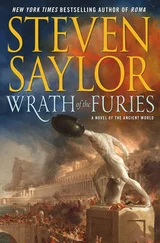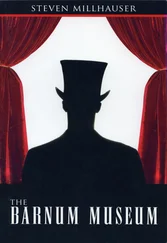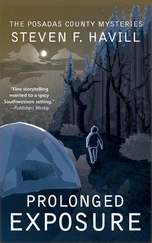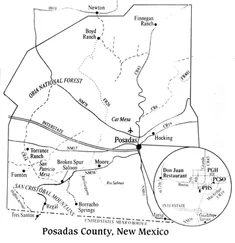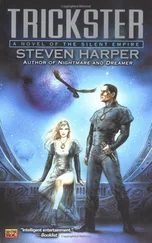Steven Dubner - Freakonomics
Здесь есть возможность читать онлайн «Steven Dubner - Freakonomics» весь текст электронной книги совершенно бесплатно (целиком полную версию без сокращений). В некоторых случаях можно слушать аудио, скачать через торрент в формате fb2 и присутствует краткое содержание. Жанр: Старинная литература, на русском языке. Описание произведения, (предисловие) а так же отзывы посетителей доступны на портале библиотеки ЛибКат.
- Название:Freakonomics
- Автор:
- Жанр:
- Год:неизвестен
- ISBN:нет данных
- Рейтинг книги:3 / 5. Голосов: 1
-
Избранное:Добавить в избранное
- Отзывы:
-
Ваша оценка:
- 60
- 1
- 2
- 3
- 4
- 5
Freakonomics: краткое содержание, описание и аннотация
Предлагаем к чтению аннотацию, описание, краткое содержание или предисловие (зависит от того, что написал сам автор книги «Freakonomics»). Если вы не нашли необходимую информацию о книге — напишите в комментариях, мы постараемся отыскать её.
Freakonomics — читать онлайн бесплатно полную книгу (весь текст) целиком
Ниже представлен текст книги, разбитый по страницам. Система сохранения места последней прочитанной страницы, позволяет с удобством читать онлайн бесплатно книгу «Freakonomics», без необходимости каждый раз заново искать на чём Вы остановились. Поставьте закладку, и сможете в любой момент перейти на страницу, на которой закончили чтение.
Интервал:
Закладка:
The early Klan did its work through pamphleteering, lynching, shooting, burning, castrating, pistol-whipping, and a thousand forms of intimidation. They targeted former slaves and any whites who supported the blacks’ rights to vote, acquire land, or gain an education. Within barely a decade, however, the Klan had been extinguished, largely by legal and military interventions out of Washington, D.C.
But if the Klan itself was defeated, its aims had largely been achieved through the establishment of Jim Crow laws. Congress, which during Reconstruction had been quick to enact measures of legal, social, and economic freedom for blacks, just as quickly began to roll them back. The federal government agreed to withdraw its occupation troops from the South, allowing the restoration of white rule. In Plessy v. Ferguson, the U.S. Supreme Court gave the go-ahead to full-scale racial segregation.
The Ku Klux Klan lay largely dormant until 1915, when D. W. Griffith’s film The Birth of a Nation—originally titled The Clansman—helped spark its rebirth.
Griffith presented the Klan as crusaders for white civilization itself, and as one of the noblest forces in American history. The film quoted a line from A History of the American People, written by a renowned historian: “At last there had sprung into existence a great Ku Klux Klan, a veritable empire of the South, to protect the Southern country.” The book’s author was U.S. president Woodrow Wilson, onetime scholar and president of Princeton University.
By the 1920s, a revived Klan claimed eight million members, including President Warren G. Harding, who reportedly took his Klan oath in the Green Room of the White House. This time around, the Klan was not confined to the South but ranged throughout the country; this time, it concerned itself not only with blacks but also with Catholics, Jews, communists, unionists, immigrants, agitators, and other disrupters of the status quo. In 1933, with Hitler ascendant in Germany, Will Rogers was the first to draw a line between the new Klan and the new threat in Europe: “Papers all state Hitler is trying to copy Mussolini,” he wrote. “Looks to me like it’s the Ku Klux that he is copying.”
The onset of World War II and a number of internal scandals once again laid the Klan low. Public sentiment turned against the Klan as the unity of a country at war trumped its message of separatism.
But within a few years, there were already signs of a massive revival. As wartime anxiety gave way to postwar uncertainty, Klan membership flourished. Barely two months after V-J Day, the Klan in Atlanta burned a 300-foot cross on the face of Stone Mountain, site of a storied rock carving of Robert E. Lee. The extravagant cross burning, one Klansman later said, was intended “just to let the niggers know the war is over and that the Klan is back on the market.”
Atlanta had by now become Klan headquarters. The Klan held great sway with key Georgia politicians, and its Georgia chapters included many policemen and sheriff’s deputies. Yes, the Klan was a secret society, reveling in passwords and cloak-and-dagger ploys, but its real power lay in the very public fear that it fostered—exemplified by the open secret that the Ku Klux Klan and the law-enforcement establishment were brothers in arms.
Atlanta—the Imperial City of the KKK’s Invisible Empire, in Klan jargon—was also home to Stetson Kennedy, a thirty-year-old man with the bloodlines of a Klansman but a temperament that ran opposite. He came from a prominent southern family whose ancestors included two signers of the Declaration of Independence, an officer in the Confederate Army, and John B. Stetson, founder of the famed hat company and the man for whom Stetson University was named.
Stetson Kennedy grew up in a fourteen-room house in Jacksonville, Florida, the youngest of five children. His uncle Brady was a Klansman. But he got his first real exposure to the Klan when the family’s maid, Flo, who had pretty much raised Stetson, was tied to a tree, beaten, and raped by a gang of Klansmen. Her offense: talking back to a white trolley driver who had shortchanged her.
Because Kennedy couldn’t fight in World War II—he had had a bad back since childhood—he felt compelled to defend his country at home. Its worst enemy, he believed, was bigotry. Kennedy became a self-described “dissident at large,”
writing anti-bigotry articles and books. He became close friends with Woody Guthrie, Richard Wright, and a host of other progressives; Jean-Paul Sartre published his work in France.
Writing did not come easily to Kennedy, or happily. He was at root a country boy who would rather have been off fishing the swamps. But he was afflicted by a foolhardy devotion to his cause. Kennedy would go on to become the only gentile member of the Anti-Defamation League’s postwar effort to smite bigotry.
(He coined the phrase “Frown Power,” a centerpiece of the ADL’s peer-pressure campaign, which encouraged people to pointedly frown when they heard bigoted speech.) He became the only white correspondent for the Pittsburgh Courier, the country’s largest black newspaper. (He wrote a column about the race struggle in the South under the pseudonym Daddy Mention—a black folk hero who, as myth told it, could outrun the blast of a sheriff’s shotgun.) What drove Kennedy was a hatred of small-mindedness, ignorance, obstructionism, and intimidation—which, in his view, were displayed by no organization more proudly than by the Ku Klux Klan. Kennedy saw the Klan as the terrorist arm of the white establishment itself. This struck him as an intractable problem, for a variety of reasons. The Klan was in cahoots with political, business, and law-enforcement leaders. The public was frightened and felt power-less to act against the Klan. And the few anti-hate groups that existed at the time had little leverage or even information about the Klan. As Kennedy later wrote, he was particularly chagrined by one key fact about the Klan:
“Almost all of the things written on the subject were editorials, not exposés. The writers were against the Klan, all right, but they had precious few inside facts about it.”
So Kennedy decided—as any foolhardy, fearless, slightly daft anti-bigot would—
to go undercover and join the Ku Klux Klan.
In Atlanta, he started hanging around a pool hall “whose habitués,” as he later wrote, “had the frustrated, cruel look of the Klan about them.” A man named Slim, a taxi driver, sat beside him at the bar one afternoon. “What this country needs is a good Kluxing,” Slim said. “That’s the only way to keep the niggers, kikes, Catholic dagos, and Reds in their place!”
Kennedy introduced himself as John S. Perkins, the alias he had adopted for his mission. He told Slim, truthfully, that his uncle Brady Perkins back in Florida had once been a Great Titan with the Klan. “But they’re dead now, aren’t they?”
he asked Slim.
That prompted Slim to whip out a Klan calling card: “Here Yesterday, Today, Forever! The Ku Klux Klan Is Riding! God Give Us Men!” Slim told “Perkins”
that he was in luck, for there was a membership drive under way. The $10
initiation fee—the Klan’s sales pitch was “Do You Hate Niggers? Do You Hate Jews? Do You Have Ten Dollars?”—had been reduced to $8. Then there was another $10 in annual dues, and $15 for a hooded robe.
Kennedy balked at the various fees, pretending to play hard to get, but agreed to join. Not long after, he took the Klan oath in a nighttime mass initiation atop Stone Mountain. Kennedy began attending weekly Klan meetings, hurrying home afterward to write notes in a cryptic shorthand he invented. He learned the identities of the Klan’s local and regional leaders and deciphered the Klan’s hierarchy, rituals, and language. It was Klan custom to affix a Kl to many words; thus would two Klansmen hold a Klonversation in the local Klavern. Many of the customs struck Kennedy as almost laughably childish. The secret Klan handshake, for instance, was a left-handed, limp-wristed fish wiggle. When a traveling Klansman wanted to locate brethren in a strange town, he would ask for a “Mr. Ayak”—“Ayak” being code for “Are You a Klansman?” He would hope to hear, “Yes, and I also know a Mr. Akai”—code for “A Klansman Am I.”
Читать дальшеИнтервал:
Закладка:
Похожие книги на «Freakonomics»
Представляем Вашему вниманию похожие книги на «Freakonomics» списком для выбора. Мы отобрали схожую по названию и смыслу литературу в надежде предоставить читателям больше вариантов отыскать новые, интересные, ещё непрочитанные произведения.
Обсуждение, отзывы о книге «Freakonomics» и просто собственные мнения читателей. Оставьте ваши комментарии, напишите, что Вы думаете о произведении, его смысле или главных героях. Укажите что конкретно понравилось, а что нет, и почему Вы так считаете.

